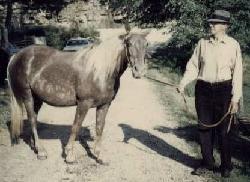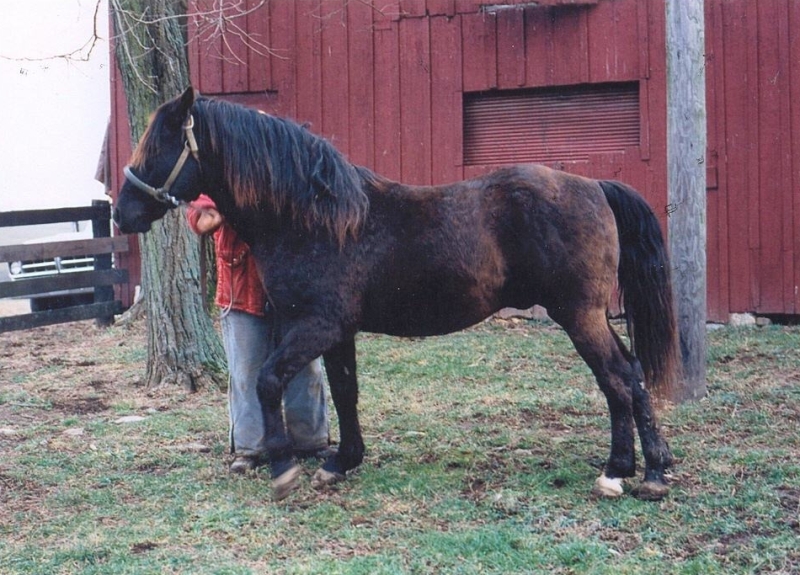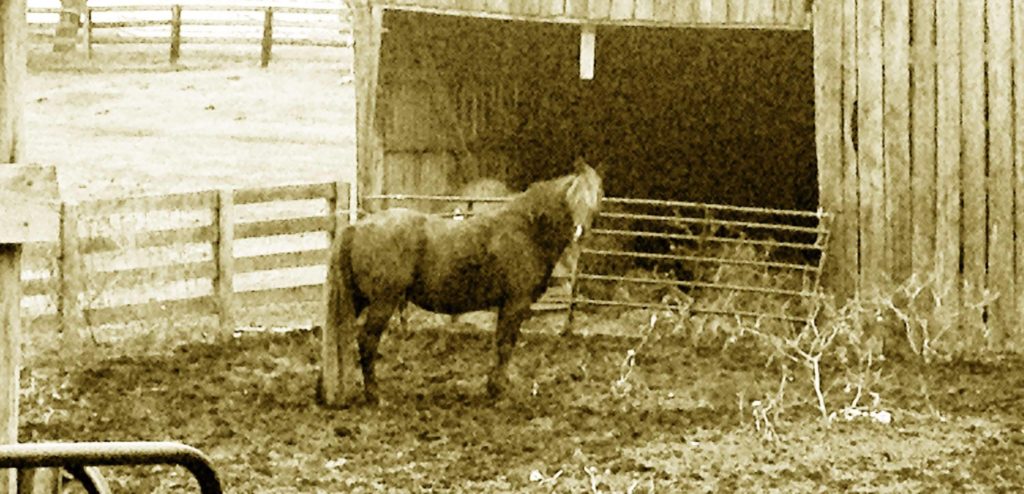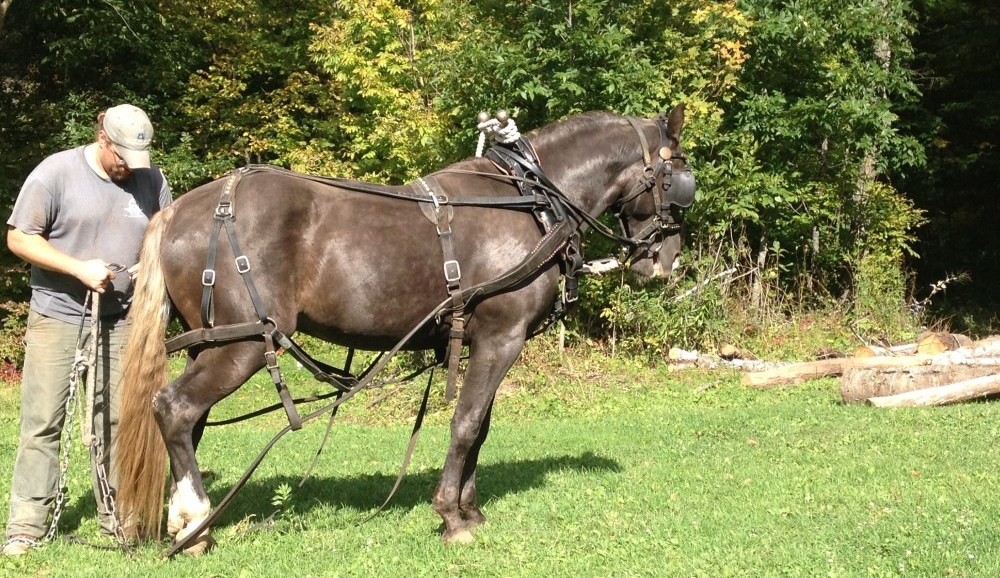This time of the year is perhaps the second best time to cut wood on the bluff and pull it home with horses. In the fall like this, the ground still unfrozen, both you and the horses have enough traction to work safely, without slipping. The ground has some sponginess to it, so logs are gently cradled. The leaf litter is loose and covers the ground readily after a skid. After the ground freezes, without snow; or worse yet, the ground freezes and there is just a little snow- pulling wood can be dangerous. There might be just enough snow to make the logs pull slick and easy, but not enough to cradle them so they don’t swing wildly over a peak in the land. Worse, they slide downhill, sideways, building tremendous momentum until they meet a tree or rock with enough substance to halt its outlaw trajectory. Given an ignorant teamster, all of this can mean tremendous strain for the team, jarring blows of the log, sudden stops behind a sapling or rock in the trail. In short, conditions that could sap a team’s strength, will and confidence; if not lead to direct injury.
They say the Inuit have 50 words to describe all the types of snow they encounter. Surely, the skilled teamsters of the past had just as sophisticated an understanding of the dynamic nature of the footing they would encounter, and much advice on how to effectively work a team in the woods during those times. I have spoken with a few teamsters who live in Appalachia; who understand these conditions and are able to translate the diverse narrative of the forest floor into safe working environment for their team and themselves. Unfortunately, this wisdom has been all but lost in my part of the world. Perhaps there are a few of the old guard who worked this way out here, but I do not know them. Instead, I go slow with small steps; as my team and I rediscover this language in fits and starts. In other words, the hard way.
This is what has led to my procrastination on cutting the big oak.
This particular oak was snapped in half during a windstorm two years ago. It was a monumental tree, easily one of the largest on the farm, for some reason left uncut back in the 60’s . It is 1/3 the way down from the ridge- just where the land transitions from a gentle field, to the steepest part of the bluff. At one time, it grew in the thick of the forest, as evidenced by 50 plus feet of limbless trunk. Since the clear-cut, it stood over the regrowth that has been racing to catch up.
On the ridge, there are a handful of trees that were fashioned this way. They tower above the rest of the younger canopy. Sentinel trees witness to another time. But because of their location and the nature of their growth, their mortality rate is much higher than any other group of trees on my farm. It is sad, in some ways, their fate sealed years ago by thoughtless logging. These trees are under assault on two fronts: First, because they are so much taller than their neighbors, they are prone to fatal lightning strikes. Second, that far above the canopy, they are exposed to lethal gale force winds.
These trees, grown in thick forest, never had to cope much with wind. If you look at a tree line, you will see that in a healthy forest, most of the trees reach roughly the same height. Only a few mavericks project above this boundary. The reason is because above this line, the wind speed increases exponentially, causing damage to the tips of growing trees. Also the top, catching wind like a sail, stresses the trunk and the tree responds by increasing in girth rather than height. You can test this for yourself. Raise a group of tomato plants near a fan and another group in calm air; one will be short and stocky, the other tall and lanky. My big oak had grown tall and lanky under the protective cover of his brethren; without the strength of a trunk that had been tested and proven true in a windy environment.
It is easy to conjecture what had happened in the few years after the cut. Probably several of the weaker trees that had been similarly abandoned, blew over. A few rotten windblown trees attest to this fact. Some, like my big oak, had through good fortune survived the windstorms and lightning. However, each year, one or more of these trees suffered a fatal blow. Four years ago, it was a gigantic popple tree that was hit by lightning. I left that to my pileated woodpeckers, who rapidly dissected the trunk in search of carpenter ants. Last year, it was a massive, hollow Basswood tree that was slowly disintegrating under its own weight. It needed to come down anyway, but I was loath to cut the soft, hollow tree, which would fall unpredictably, and therefore, dangerously. Each year, I look at a Red Maple, a close neighbor of my Big Oak. It has suffered its own losses to the wind, which has amputated its brittle branches. These amputees still hang in the canopy; tremendous widow makers that I should like to avoid very much. In this tree, my Pileated and Downy woodpeckers have been busy reconnoitering all the dead and dying branches for food. Each spring they carve out new homesteads for their families. I find myself sympathetic to their cause; a convenient excuse to overlook this particular maple.
In this way, I have come to know the personality of these old trees. As a result of my own compassionate nature, I had decided long ago, that I would leave this particular red oak untouched for the rest of its life. And so it was.
(to be continued)



